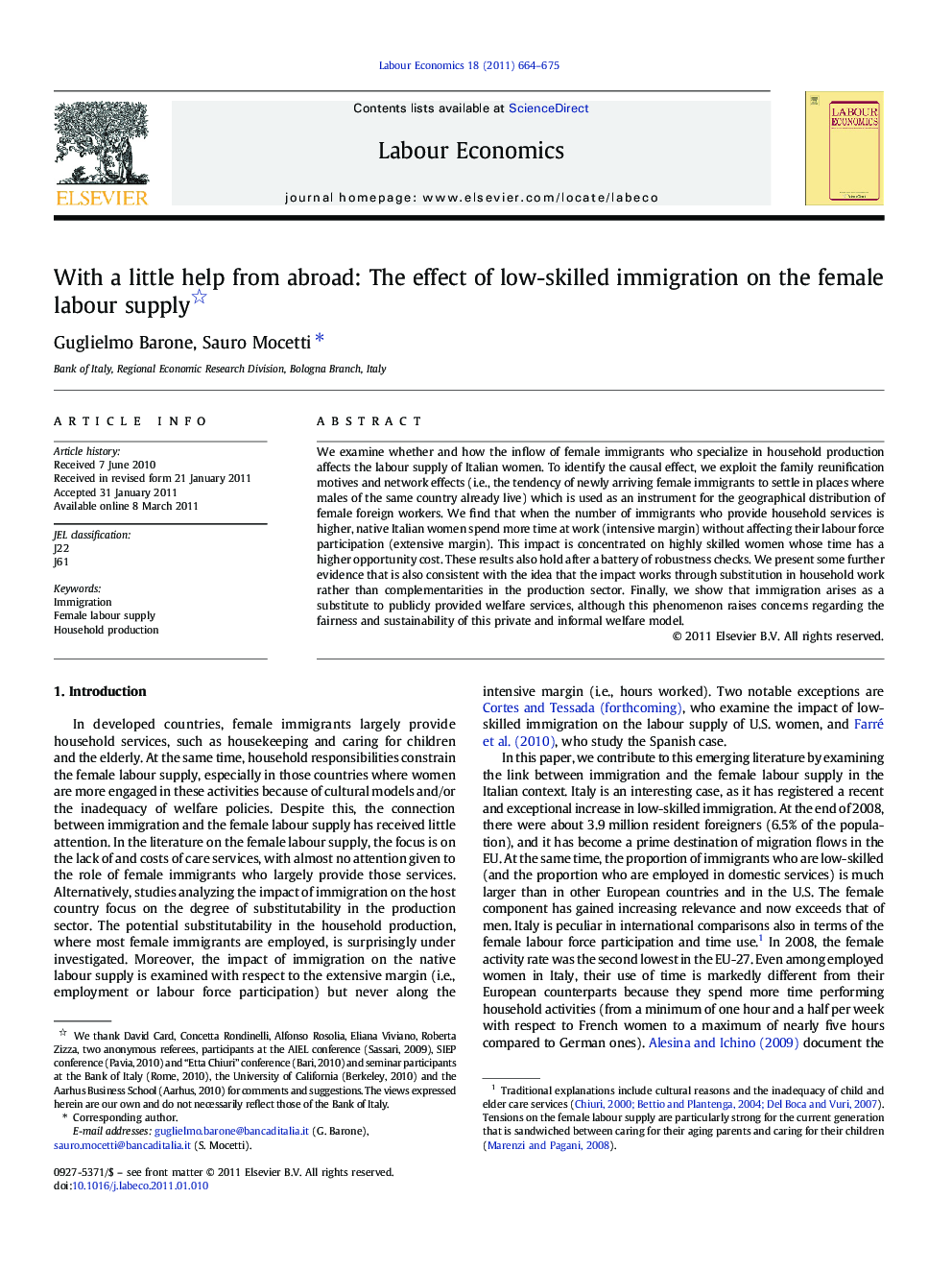| Article ID | Journal | Published Year | Pages | File Type |
|---|---|---|---|---|
| 972777 | Labour Economics | 2011 | 12 Pages |
We examine whether and how the inflow of female immigrants who specialize in household production affects the labour supply of Italian women. To identify the causal effect, we exploit the family reunification motives and network effects (i.e., the tendency of newly arriving female immigrants to settle in places where males of the same country already live) which is used as an instrument for the geographical distribution of female foreign workers. We find that when the number of immigrants who provide household services is higher, native Italian women spend more time at work (intensive margin) without affecting their labour force participation (extensive margin). This impact is concentrated on highly skilled women whose time has a higher opportunity cost. These results also hold after a battery of robustness checks. We present some further evidence that is also consistent with the idea that the impact works through substitution in household work rather than complementarities in the production sector. Finally, we show that immigration arises as a substitute to publicly provided welfare services, although this phenomenon raises concerns regarding the fairness and sustainability of this private and informal welfare model.
Graphical AbstractFigure optionsDownload full-size imageDownload as PowerPoint slideResearch Highlights► Specialized immigration enables native women to spend more time at work. ► Impact is concentrated on highly skilled women who have a higher opportunity cost. ► Impact works through substitution in household activities. ► Specialized immigration arises as a substitute to publicly provided welfare services.
